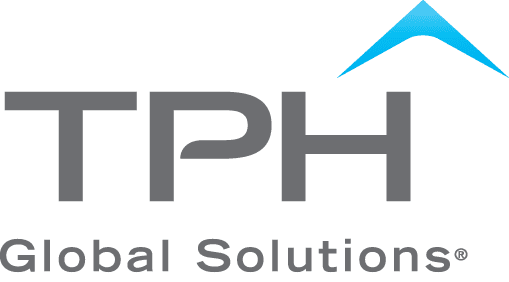Logistics and supply chain management has always played a critical role in whether a product stumbles or soars. As the retail and ecommerce landscape continues to evolve at a rapid pace, the significance of an optimized supply chain has never been clearer. Brands, both established and emerging, face unique challenges that demand strategic solutions.
Here’s how an optimized supply chain can offer cost-saving benefits in 2024 and beyond.
1. Established Brands Navigate Expansion
While the frenetic pace of retail in the post-COVID era slowed for most over the course of 2023, warehouse clubs and other discount stores have, and continue to, thrive. According to the National Retail Federation, 40% of all announced retail openings in 2023 were for warehouse clubs, including Costco and Sam’s Club, and discount chains, like Dollar General. Costco is opening 14 new locations worldwide in the next four months. Sam’s Club is set to open over 30 new U.S. stores in the coming years.
Due to this promising boom, many businesses that secured spots in big box and warehouse club giants, are eyeing expansion. But more available shelf space does not necessarily equal a guaranteed win for established brands: as opportunities increase, so too, does competition.
In order to succeed in 2024, brands seeking to scale must adopt a lean mindset and prioritize flexibility. Maximizing efficiencies and leveraging the supply chain to reduce costs will be key to success. Those who operate nimbly will win out over those who do not.
2. Emerging Brands Aim for Big Box Retailers
For up-and-coming brands, breaking into the big leagues like Costco can be daunting. Success requires more than a great product; it needs strategic supply chain management to meet retailer standards, deliver on time, and maintain profitability.
Having a savvy supply chain strategy can also help emerging brands before they even begin pitching to retailers. Despite recent economic volatility, capital is currently available for the taking – but won’t be secured based on product, alone. In an interview with ModernRetail, the managing partner of a fund said he, like many investors, specifically seeks out companies whose founders “have industry skills that go beyond marketing, such as efficient distribution.”
3. Ecommerce-Centric Brands Struggle to Stand Out, Contain Costs
Not every brand is looking for retail floor space – many are focusing on online Direct to Consumer (D2C), sales. For those in the retail space, this should come as no surprise – ecommerce is booming. Some estimate that a quarter of all global sales will be made online by 2025.
This transition has, unsurprisingly, led to some growing pains – that could inhibit success if improperly managed. Two major challenges ecommerce brands must contend with are increased competition and elevated overhead.
Increased Competition
The global nature of the internet means that U.S.-based online retailers face stiff competition from both home and abroad. A number of British brands, for example, are currently expanding into the U.S. market in an effort to boost sales that have lagged during the region’s cost of living crisis. As the market continues to grow more crowded and competition becomes increasingly cutthroat, retailers must find new ways to differentiate themselves.
Elevated Overhead
In their rush to fulfill ever-growing online demand, many direct-to-consumer (D2C) brands find themselves entangled in high supply chain costs. To keep pace with high volumes of orders, and to ensure customer satisfaction, many brands overpay for supply chain components like packaging, co-packing, and third-party logistics.
The solution to these challenges? A thorough audit and efficient management of the supply chain. Keeping a sharp eye on back-end operations, diversifying risk, and tapping into a global supply chain network can be a game-changer for brands looking to stand out and reduce costs.
4. Retailers Respond to Shifts in Consumer Behavior
September 2023 data from the U.S. Bureau of Labor Statistics shows that, compared to 2021, spending on essential costs increased, while spending on non-essential goods decreased in 2022. This shift, along with the trend of consumers favoring services over goods, has continued through 2023. Amid this landscape, U.S. credit card debt is currently at an all-time high of over $1 trillion.
The upshot? Fluctuating consumer behavior has led retailers to become more cautious. From our vantage point, some are buying half as much as they used to, reflecting a shift from overbuying during the height of, and immediate aftermath of peak COVID, to cautious underbuying. Even retail giants such as Amazon saw revenue fall by about $30 million YOY this past quarter which, according to Amazon CFO Brian Olsavsky, is due to increased consumer caution and tighter spending budgets.
How TPH Can Optimize Your Supply Chain
Are you experiencing similar challenges? You’re not alone. TPH Global Solutions® recognizes the impact of changing market demands and continually evolves to counteract them. By offering robust supply chain solutions, from co-packing alternatives to optimizing logistics, TPH provides companies the stability they need amid market turbulence.
An efficiently managed global supply chain can insulate brands from unpredictable market shifts. In times of uncertainty, it’s crucial to have a partner who understands the intricacies of global logistics, cost management, and risk diversification.
Whether you’re an established brand aiming to expand, an emerging brand navigating entry into major retailers, or a D2C brand looking to optimize, TPH is here to guide you. Our expertise lies in creating solutions that improve efficiency, eliminate waste, and — most importantly — save costs.
Contact TPH today to discover how we can redefine your supply chain, and together, prepare for a prosperous 2024 and beyond.

